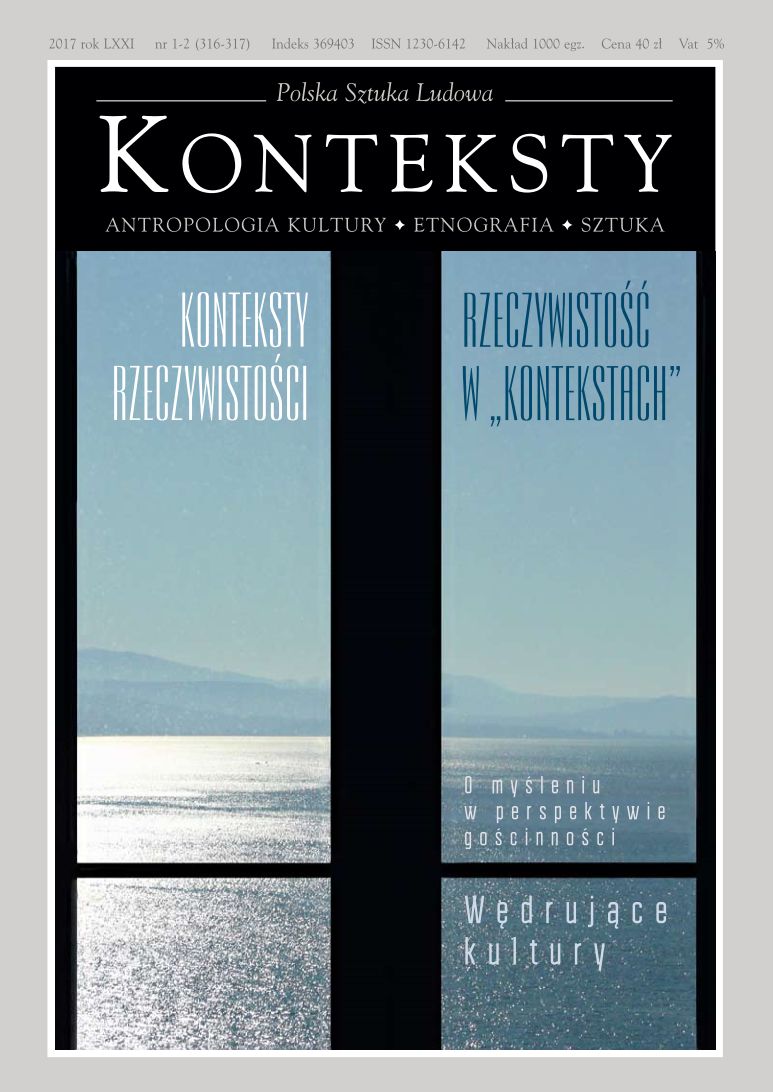Koncepcja struktury zjawiska „ksenofanii”
Conception of the Structure of the Phenomenon of “Xenophany”
Author(s): Tomasz PełechSubject(s): Philosophy, Social Sciences
Published by: Instytut Sztuki Polskiej Akademii Nauk
Keywords: xenophany;anthropology;
Summary/Abstract: This article proposes a structure of the phenomenon of “xenophany”, a conception that, according to the author, appears to be a crucial instrument employed for the purpose of introducing order into all sorts of information concerning the presentation of the “stranger”. The author indicates four constant aspects of “xenophany”: onoma (τὸ ὄνομα), eidos (τὸ εἶδος), diaita (ἠ δίαιτα), and ethos (τὸ ἦθος), which constitute a framework filled with variable and intertwined elements comprising its content and, at the same time, acting as symptoms of the rhetoric of “alienness”. The article embarks upon the topic associated with one of man’s fundamental traits, namely, life in a group with which he identifies himself and is identified by others. The identity of the group is stressed in the course of all interactions with the “stranger”. A supreme role in shaping the image of the “stranger” is played by the phenomenon of “xenophany” – the pursuit of all sorts of differences: linguistic, moral, cultural or ethnic, which disclose distinctness. This process serves the purpose of underlining the collective identity of a given group distinguished by a specific collection of socio-cultural features (norms, customs, language, or a system of values) whose majority is shared by members of a given group and is distinct against the background of the “stranger”. The image of different groups sketched within the framework of an ethnocentric perspective depicts the mental states and intellectual equipment of the community in which the given depiction emerged.
Journal: Konteksty
- Issue Year: 316/2017
- Issue No: 1-2
- Page Range: 384-392
- Page Count: 9
- Language: Polish
- Content File-PDF

